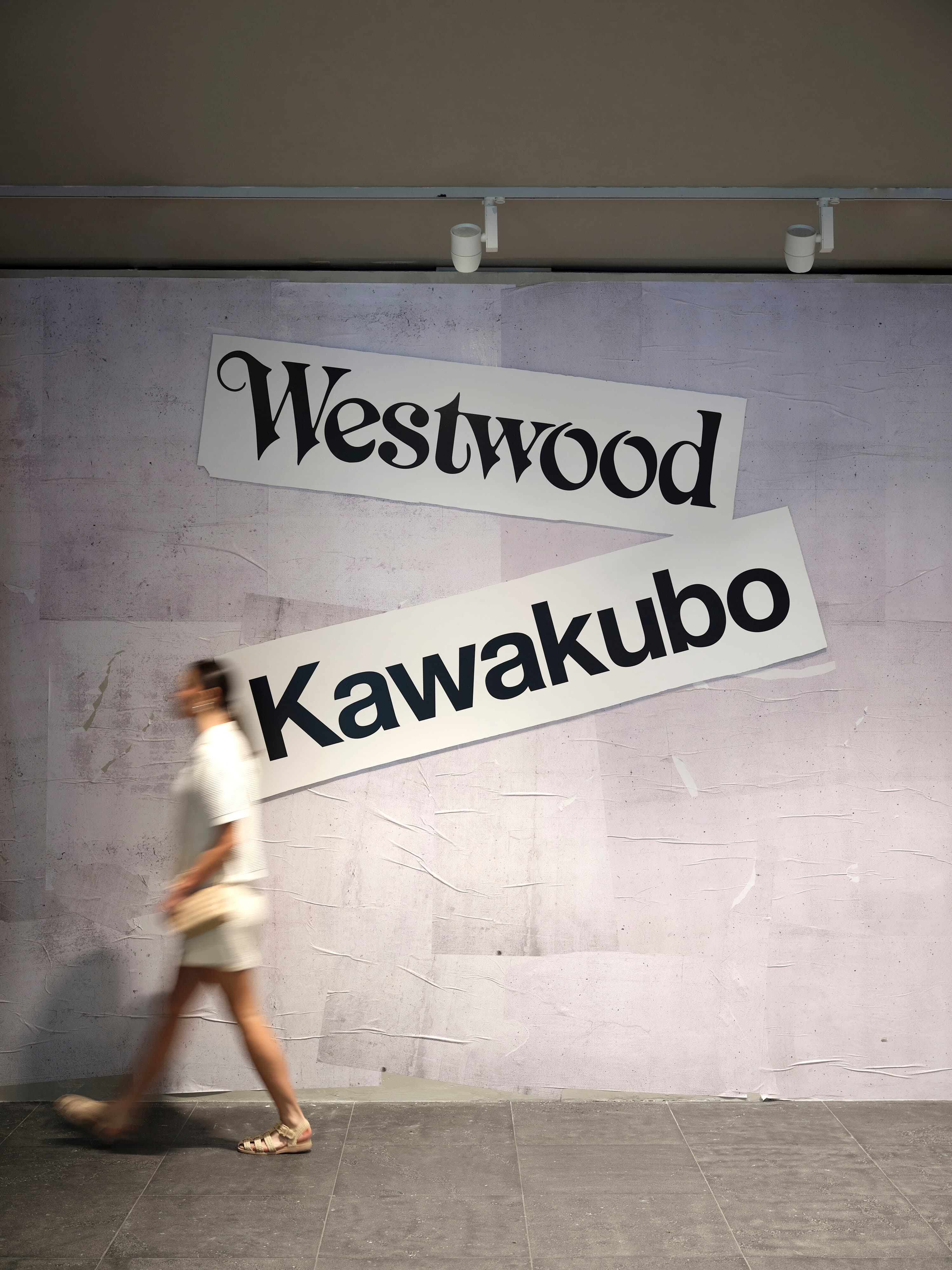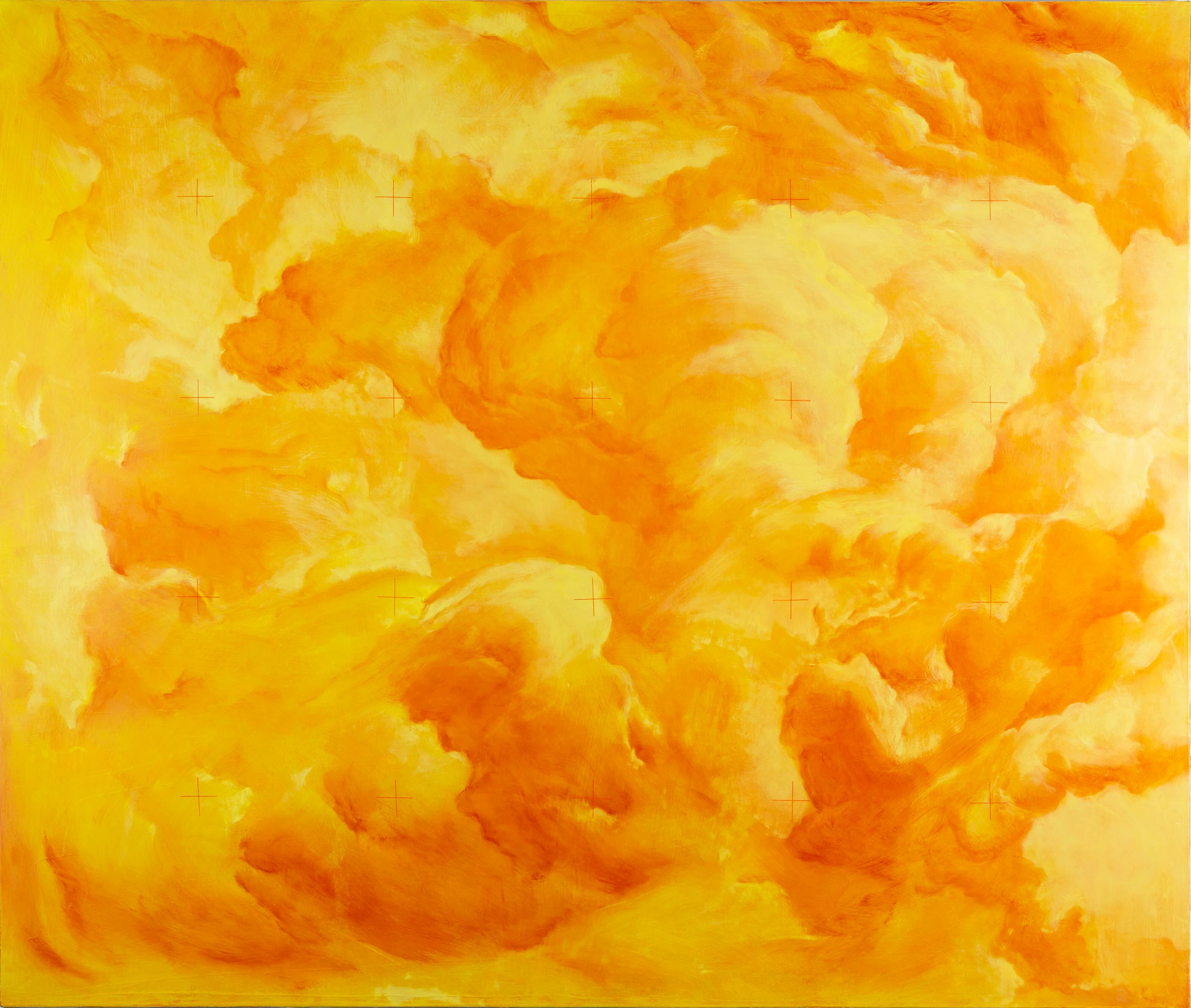Kalisolaite ‘Uhila, Kelekele Mo’ui (Living Soil), Carriageworks, Sydney Contemporary, Gadigal Country, Sydney, 14 September 2025, image courtesy the artist. Photo: Robert George
Kelekele Mo’ui (Living Soil)
Nina Eva Caroline Stromqvist
Some fifteen years ago, I participated in a Redfern Tour of Beauty led by activist art group, SquatSpace. The tour was conceived as a way to confront and better understand the gentrification of Redfern, and the impact it was having on the local communities—particularly First Nations peoples, for whom the area is the birthplace of the urban Aboriginal civil rights movement. As part of the tour, we were invited to sit on deck chairs overlooking a hole in the ground—a construction site that was slowly becoming a commercial precinct. From our seated distance, the scene unfolded with muted absurdity: the occasional clank of a crane, a foreman waving his arms about in silent instruction. Like a scene of a play, the characters were labourers of a larger story, and our witnessing to it an uneasy act of cultural tourism that confronted us with the realities of our own privileged position. The everyday banality of construction shifted into something performative and much more interesting, until of course, we were asked to move on—our presence no longer welcome in this “public” space that was on its way to becoming something else entirely.
This silent spectacle was at once a meditation on labour and a reflection on time and productivity. We bore witness to the inevitable march of gentrification in Redfern, but our experience was framed as something temporary, relational and fleeting, to eventually become an anecdote for oral history. That hole in the ground has since been filled with a new set of values, and the memory of sitting and watching alongside my tour group lingers, some fifteen years later, as I sit now at Carriageworks watching a different kind of performance. This new scene strikes me as a gesture to give back some of the loss we bore witness to, down the road, over a decade ago.
The performance is by Auckland-based Tongan artist Kalisolaite ‘Uhila, titled Kelekele Mo’ui (Living Soil). The artist, invited by curator José De Silva as part of Sydney Contemporary’s performance program, teases out the Tongan concept of maumau-taimi, or “wasting time” as a performance strategy to bridge Tongan and Western cultures. For Kelekele Mo’ui, ‘Uhila draws from his own background as a labourer to test boundaries of productivity and meaning, while reversing the principles of efficiency and production through poetic gesture.
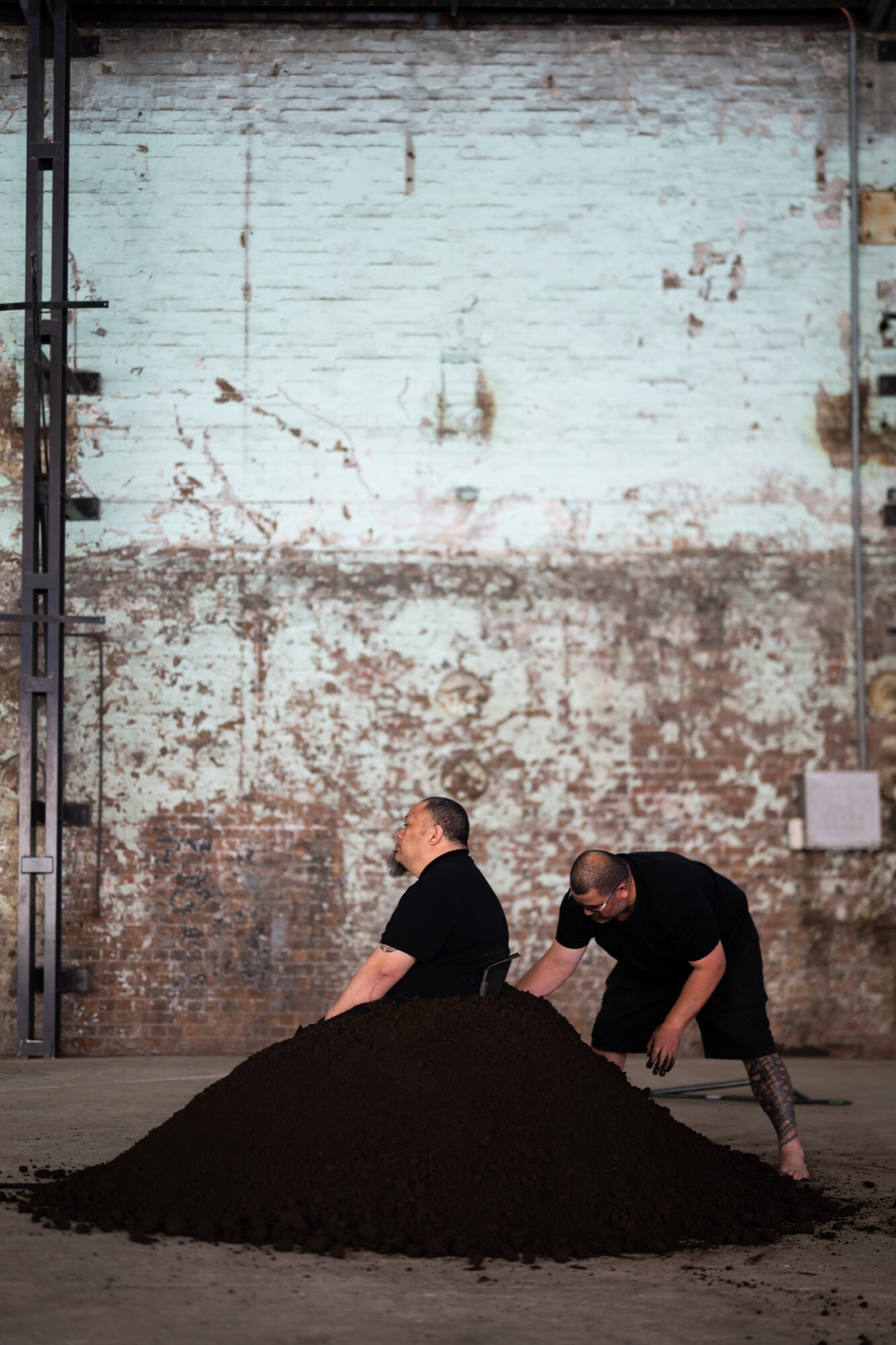
Kalisolaite ‘Uhila, Kelekele Mo’ui (Living Soil), Carriageworks, Sydney Contemporary, Gadigal Country, Sydney, 14 September 2025, image courtesy the artist. Photo: Wel Nel
Young men dressed in hi-vis push wheelbarrows of soil down the length of the Carriageworks shed towards the artist, tipping the soil at the artist’s feet, burying him wheelbarrow by wheelbarrow as he sits in silent meditation. ‘Uhila’s gaze remains fixed in the distance on the large sacks of soil that will eventually consume him. The endurance of the act will take up to five hours, testing the artist’s mental and physical limits, while he transforms into a living monument constructed by the labour of workers united in their task. ‘Uhila is the eternal constant here, unmoving, as the commerce of the art market spirals around him. In reflecting on maumau-taimi, ‘Uhila writes “My time is measured by shadows and nature from high tides to low tides, birds to early hours of traffic, and my time is censored by my everyday existence. In Pacific cultures space is active and belongs; it is not just empty waiting to be activated or be bought or sold.”
At the Art Fair spectators come and go, with the lingering few struck by the slowness of the situation. I linger here, as the history of the Everleigh Rail Yard resurfaces with each turn of the soil. This place was once a vital source of employment for First Nations people, who worked in the foundry, the boiler room, the workshops, and later in the goods yard. ‘Uhila’s action resists the ways in which sites like this are typically controlled and utilised, while also paying homage to the invisible labour—past and present—that has shaped this place. The workers in this performance are friends and relatives of the artist—young men, unfamiliar with the world of contemporary art. I learned that the delayed start was due to a burning ceremony held for the artist and performers, and they were encouraged to wait until the final ember faded before beginning. For many it was their first experience of such a ritual, and I can’t imagine a more fitting way to step into the work. Focused on their task, they move in a seemingly endless cycle of burial and rebirth.
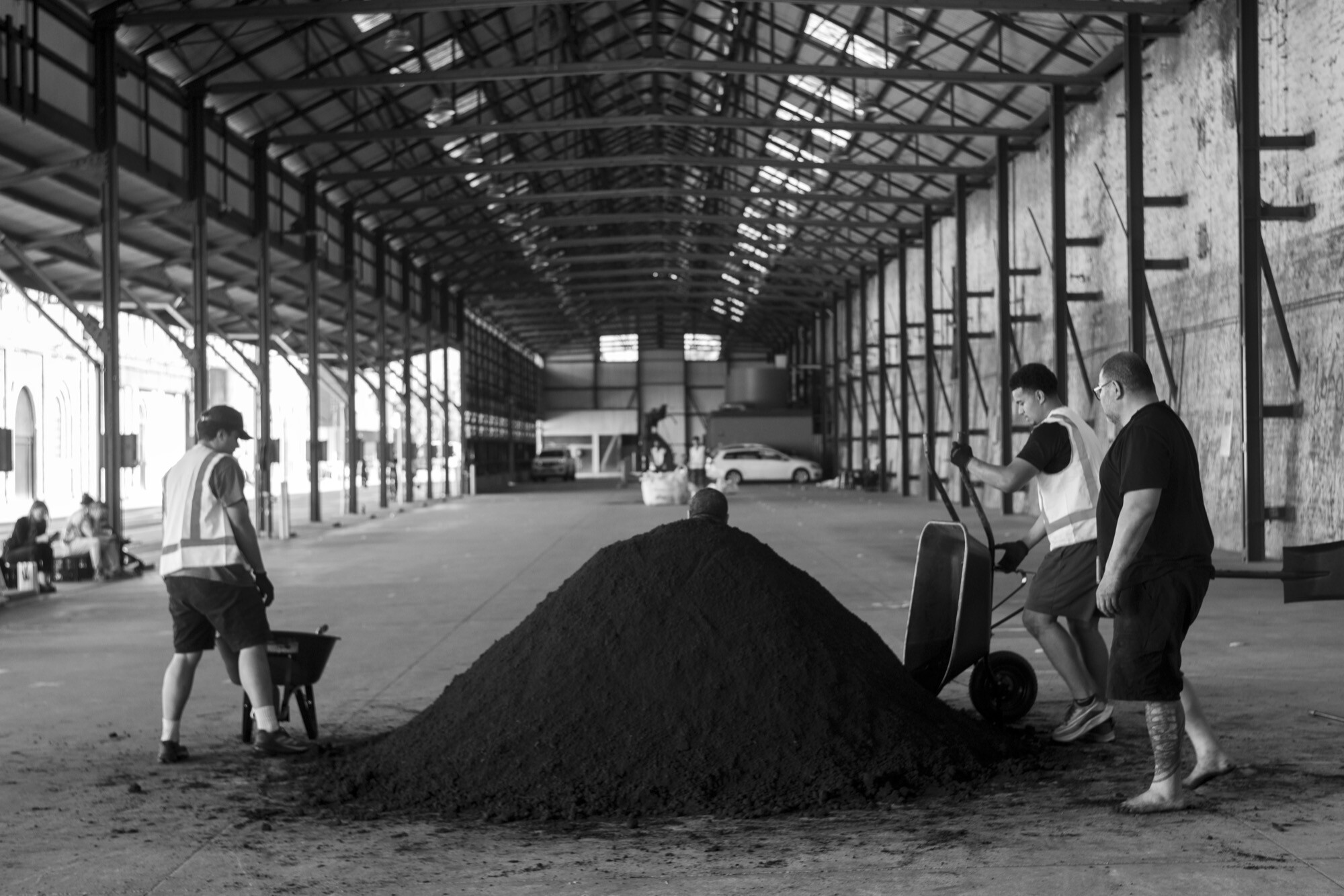
Kalisolaite ‘Uhila, Kelekele Mo’ui (Living Soil), Carriageworks, Sydney Contemporary, Gadigal Country, Sydney, 14 September 2025, image courtesy the artist. Photo: Robert George
As I linger, my thoughts shift from wasting time to the familiar sensation of disappointment at a missed opportunity for connection and engagement, too often felt in art world contexts. This was becoming most apparent in the over-regulated atmosphere surrounding the performance, where photography and video were prohibited. A single, modest sign at one end of the shed quietly asked viewers not to take photos, but its presence was easy to overlook. Naturally, spectators who stumbled upon the performance began to capture it, drawn in by the moment. The invigilators, already weary and overwhelmed, spent much of their time chasing after viewers, trying to enforce a rule that seemed to slip through their grasp. Eventually, many viewers gave up and retreated indoors, leaving the performance to unfold in a space where control had frayed and something more honest began to emerge.
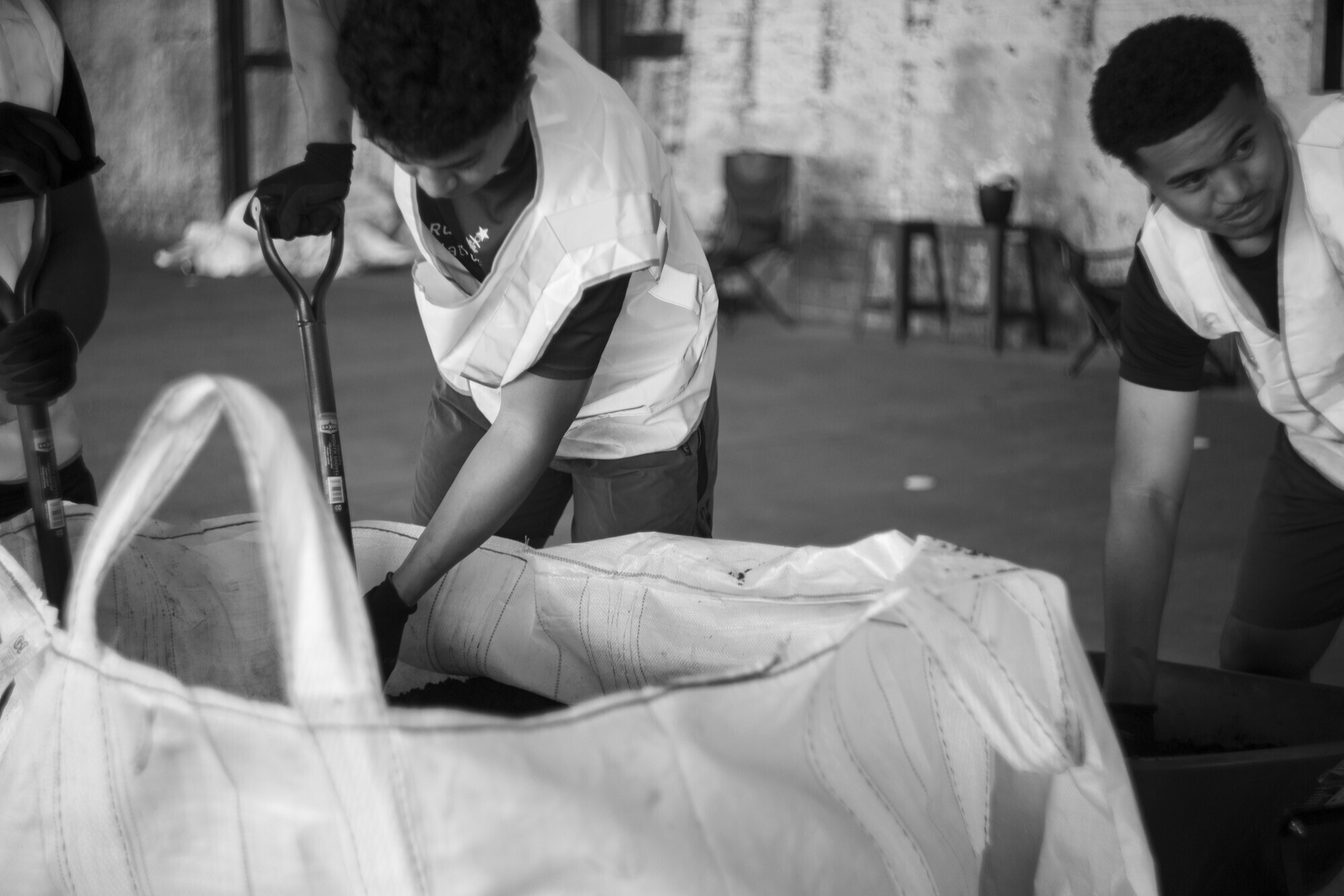
Kalisolaite ‘Uhila, Kelekele Mo’ui (Living Soil), Carriageworks, Sydney Contemporary, Gadigal Country, Sydney, 14 September 2025, image courtesy the artist. Photo: Robert George
The irony of the performance’s commentary on public versus private space was made even more acute when, given the nod by one of ‘Uhila’s performers, a Redfern local began setting up a photo with the artist, now waist deep in soil, and his three beloved Dalmatians. This moment of course, was cut short by the art fair workers, insisting that he move along. It was an unfortunate missed opportunity for engagement, I think, and one that recalls the restrictions placed on us all those years ago when asked to move on from lingering too long, in a viewing scenario at odds with the everyday movement of public life. The irony of the performance’s commentary on public versus private space was unmistakable, especially within the context of the Art Fair—an environment deeply shaped by consumer interests and the often contradictory currents of the art ecology. Despite the tension playing out on the side-lines, ‘Uhila remained un-encumbered as his body retreated into Kelekele Mo’ui. A reminder, perhaps, that by letting go—or by accepting the noise—we might find ourselves able to embrace it.
The performance concludes with the artist being pulled from the soil by a rope that remained tethered to him throughout the day. Like an umbilical cord, this connection allowed him to emerge as if reborn. The gesture underscored the ground, not only as a source of sustenance, but as a living archive of experience. In this strikingly poetic moment, the elemental nature of soil—and our deep, often forgotten connection to it—was made powerfully visible.
Curatorially, did the performance sit comfortably within the context of an Art Fair like this? I’m not sure. But perhaps its presence served as a quiet reminder of slowness, humility, and the need to tread with care and attention in a time when visibility is often conflated with value, progress with exclusion, and speed with success.
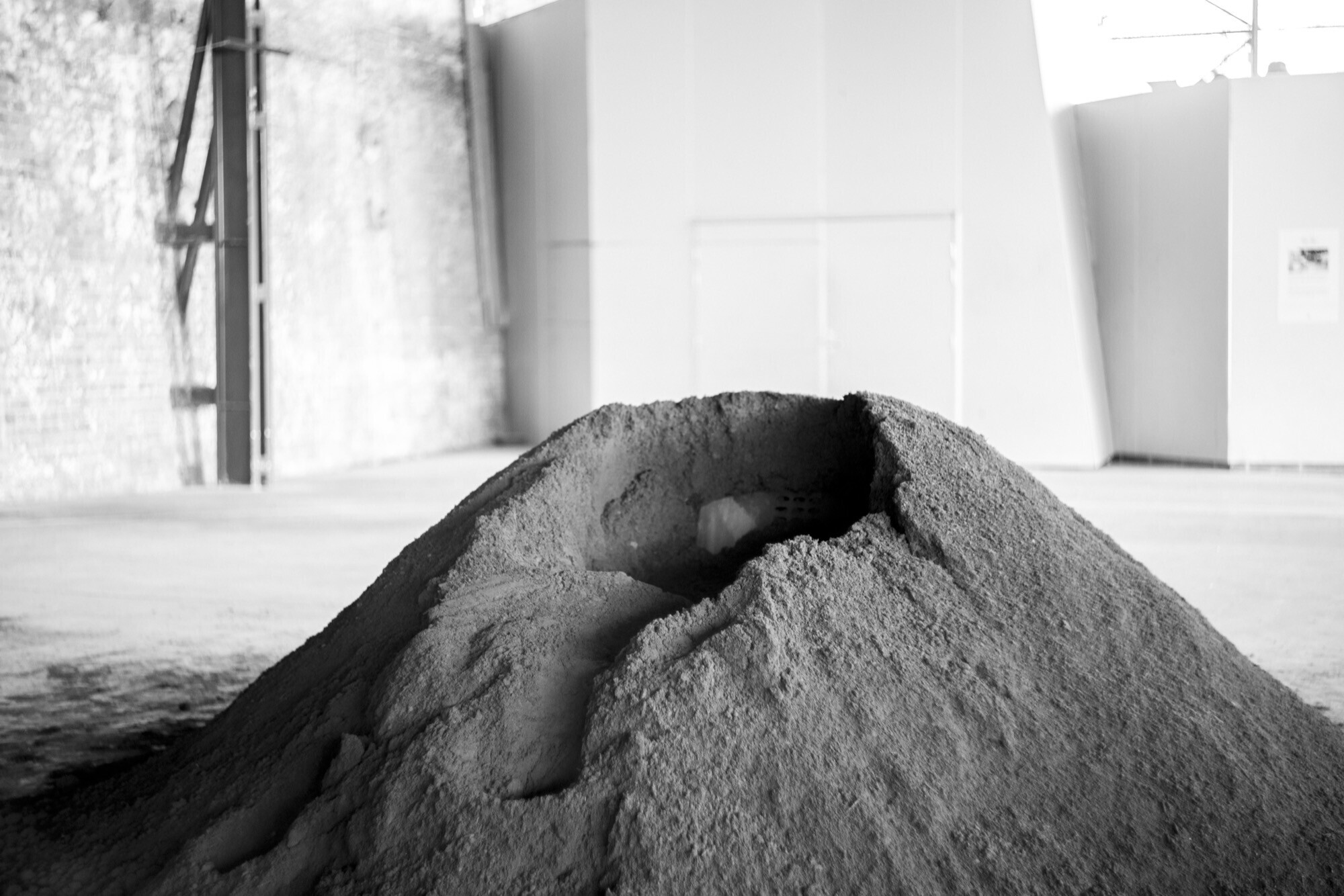
Kalisolaite ‘Uhila, Kelekele Mo’ui (Living Soil), Carriageworks, Sydney Contemporary, Gadigal Country, Sydney, 14 September 2025, image courtesy the artist. Photo: Robert George
Nina Stromqvist is a curator and lecturer, currently working at UNSW Art & Design on the lands of the Bidjigal and Gadigal people.
